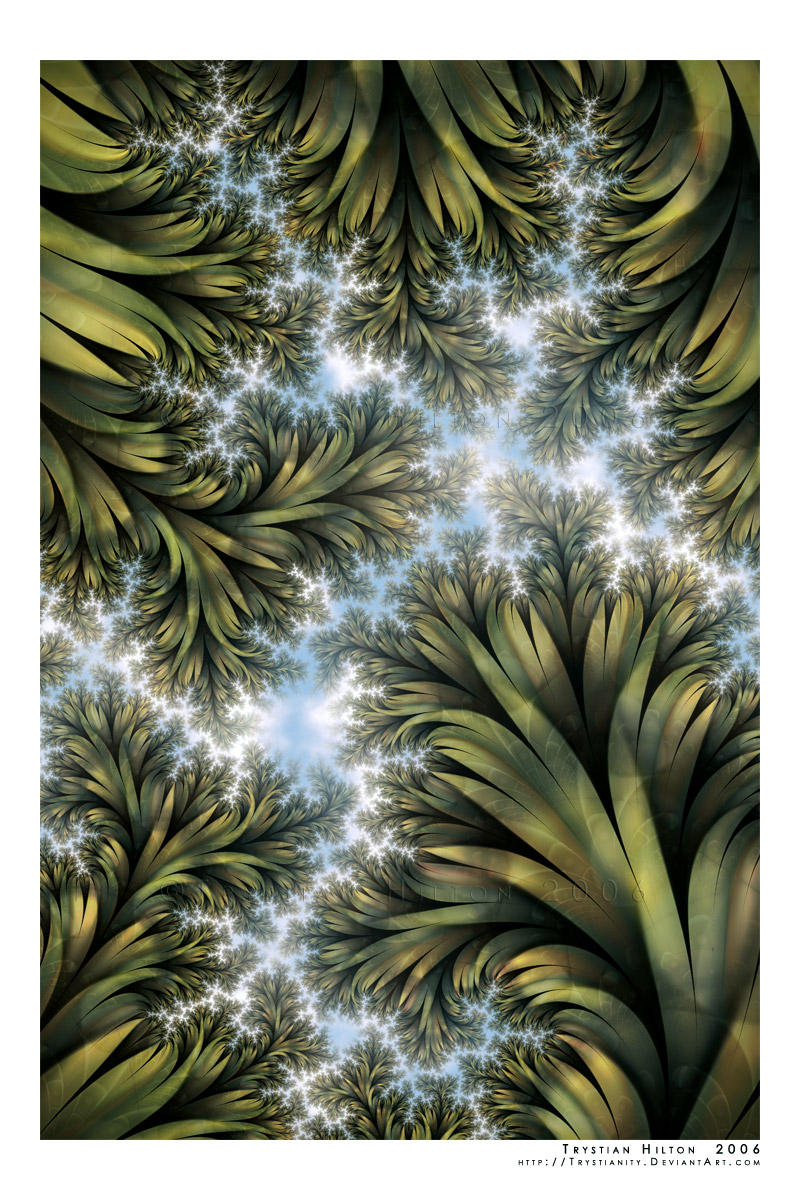Today I decided to talk about fractal art. I came across some examples of this at deviantART some years ago and, knowing absolutely nothing about it, it piqued my curiosity. For those who, as myself at that time, don't know what I'm talking about, I'll tell you what I found out about it in the web.
Fractals are objects or quantities that display self-similarity, meaning that in all scales it has the same type of structure. To put it simple, the parts of the fractal closely resemble the whole. Perhaps the most typical example of the fractal structure in nature would be snowflakes and broccoli. You can see examples with pictures at webecoist. This has a probably obvious mathematical interest, and the functions behind fractals have been studied at least since the 17th century. (for a more elaborated definition and historical review you can check Wikipedia or just google it and look for maths websites for a technical explanation).
The development of computer graphics allowed for fractal functions to have a visible translation and that led to what is now called fractal art. The objects created based on these functions, using them to define shapes and colours, are not only visually appealing, but also "technically engaging", as the viewer will feel curious and try to understand the pattern that led to it. Fractals have been represented as images, animations or music and recently 3D software brought new possibilities.
At deviantART (but I hope it has been happening at other art communities) fractal art has grown to have its own place and value recognized, and there are dedicated artists achieving true marvels using software as Apophysis or Ultra Fractal. Two of my favourite examples are Pasternak's 070509 (above) and Microcosm by trystianity (to the right). I have seen a lot of really good works by these and other authors, and I'll keep sharing them if I have their consent. I've tried both Apophysis and Ultra Fractal some time ago, and I might share some here when I feel like it, but if you feel curious about what a layman can do with them, you can check my gallery.
I just found out about Electric Sheep, a project to create a collaborative abstract artwork founded by Scott Draves. The idea is to have fractals as your screensaver and then voting on your favourites, which will influence the time they are alive and reproducing, generating new ones subject to mutations and cross-overs, in a biologically inspired system. The name was inspired by Philip K. Dick's novel Do Androids Dream of Electric Sheep, that I plan to read this year.
I just found out about Electric Sheep, a project to create a collaborative abstract artwork founded by Scott Draves. The idea is to have fractals as your screensaver and then voting on your favourites, which will influence the time they are alive and reproducing, generating new ones subject to mutations and cross-overs, in a biologically inspired system. The name was inspired by Philip K. Dick's novel Do Androids Dream of Electric Sheep, that I plan to read this year.



No comments:
Post a Comment